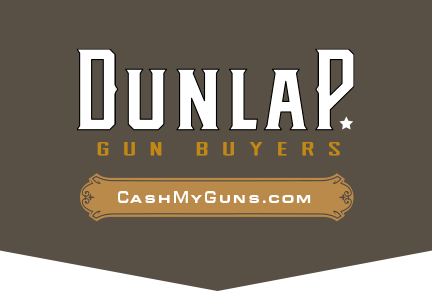The complexity of selling firearms can be daunting due to the number of legal stipulations…
Firearm Categories
No matter what you think about firearms, it can never hurt to have some knowledge on the subject. With that in mind, this article aims at covering the basic gun types for those of you who may have just stumbled upon an old relic in your attic, or even you seasoned collectors who want a refresher.
There are three main categories of firearms: handguns, rifles, and shotguns. A gun’s purpose, features, and type of ammunition it fires determine the category.
Handguns
Like its name implies, handguns (also known as pistols) are meant to fit in the hand -i.e. they are generally small in size, lightweight, and meant to be easy to carry and maneuver with your hand(s). Their shorter barrels generally mean they are less accurate than other types of firearms and are generally made to be shot at short distances (1-50 yards). Within the handgun category are single shot pistols, multi-barreled pistols, revolvers, semi-automatic pistols, and machine pistols. Don’t get overwhelmed, we’ll pick apart these names and you should find them to be fairly self-explanatory.
Single shot pistols fire one round of ammunition at a time and subsequently must be loaded after every shot.
Multi-barreled pistols have more than one barrel that result from inventors’ efforts to fire more than one round without having to reload.
Revolvers utilize a rotating ammunition cylinder that enables the user to carry multiple rounds that fire through a single barrel.
Semi-automatic pistols typically store multiple rounds of ammunition within a magazine and use the energy of one shot to reload the next bullet. One pull of the trigger fires one round of ammunition.
Machine pistols typically store multiple rounds of ammunition within a magazine and are capable of firing multiple rounds of ammunition with a single pull of the trigger. They can shoot continuously until the ammunition magazine empties or the user releases the trigger.
Rifles
Now let’s move on to rifles. Rifles are longer and heavier guns generally fired with the stock (back of the gun) resting in the shooter’s shoulder for stability. These guns lend their name to the “rifling” in their barrels but really only differ from handguns with their increased size, length of barrel, and ability to store ammunition. Rifling is a spiral pattern machined into the barrel to give the bullet stability in the air. Rifles have the capability if shooting at targets that are long distances away. Depending on the ammunition and configuration of the rifle, it’s effective range can be up to 2 miles. Much like a football is thrown with a spiral, rifling spirals the bullet so it flies true to the shooter’s desired target. The main categories of rifles are single shot rifles, lever action rifles, pump action rifles, bolt action rifles, and semi-auto rifles. Much like handguns, these names become apparent once we take a closer look at each type of rifle.
Single-shot rifles have no ammunition magazines and must be loaded after every shot.
Lever-action rifles utilize a lever near the trigger of the gun which loads the next bullet into the chamber when pulled downward and forward..
Pump-action rifles have a slide underneath the gun’s barrel that extract spent bullet cartridges and load the next round into the chamber.
Bolt action rifles have a manually operated handle that is rotated and pulled rearward then forward to extract and chamber ammunition.
Semi-automatic rifles typically store multiple rounds of ammunition within a magazine and use the energy of one shot to reload the next bullet. One pull of the trigger fires one round of ammunition.
Full automatic rifles typically store multiple rounds of ammunition within a magazine andare capable of firing multiple rounds of ammunition with a single pull of the trigger. They can shoot continuously until the ammunition magazine empties or the user releases the trigger.
Shotguns
Finally, we have shotguns. Shotguns are typically smooth-bored (do not have rifling in the barrel), and are used for small, fast-moving targets. The ammunition fired from shotguns can be small, spherical pellets called “shot” or a solid projectile called a “slug”. The types of shotguns most commonly found are single-barreled shotguns, double-barreled shotguns, pump-action shotguns, and semi-automatic shotguns.
Single-shot shotguns have one barrel from which a projectile is fired and are known to be inexpensive and reliable. Ammunition is loaded by hand.
Double-barreled shotguns use two barrels and they are stacked on top of each other (over-under shotgun) or laid next to each other (side by side shotgun). Ammunition is loaded by hand.
Pump-action shotguns hold multiple rounds of ammunition within the gun and are chambered/reloaded with a slide underneath the barrel.
Semi-automatic shotguns typically store multiple rounds of ammunition within a magazine and use the energy of one shot to reload the next round of ammunition. One pull of the trigger fires one round of ammunition.
Full automatic shotguns typically store multiple rounds of ammunition within a magazine and are capable of firing multiple rounds of ammunition with a single pull of the trigger. They can shoot continuously until the ammunition magazine empties or the user releases the trigger.
Now you have a basic overview of gun types and can proceed confidently! Feel free to familiarize yourself further by browsing the types of guns we process. As always, if you’re under the gun (see what we did there) to sell your unwanted firearm, we’re here to help. We also have you covered if you’re in the market for a gun to add to your collection. Your questions can be directed towards our knowledgeable and helpful staff.
